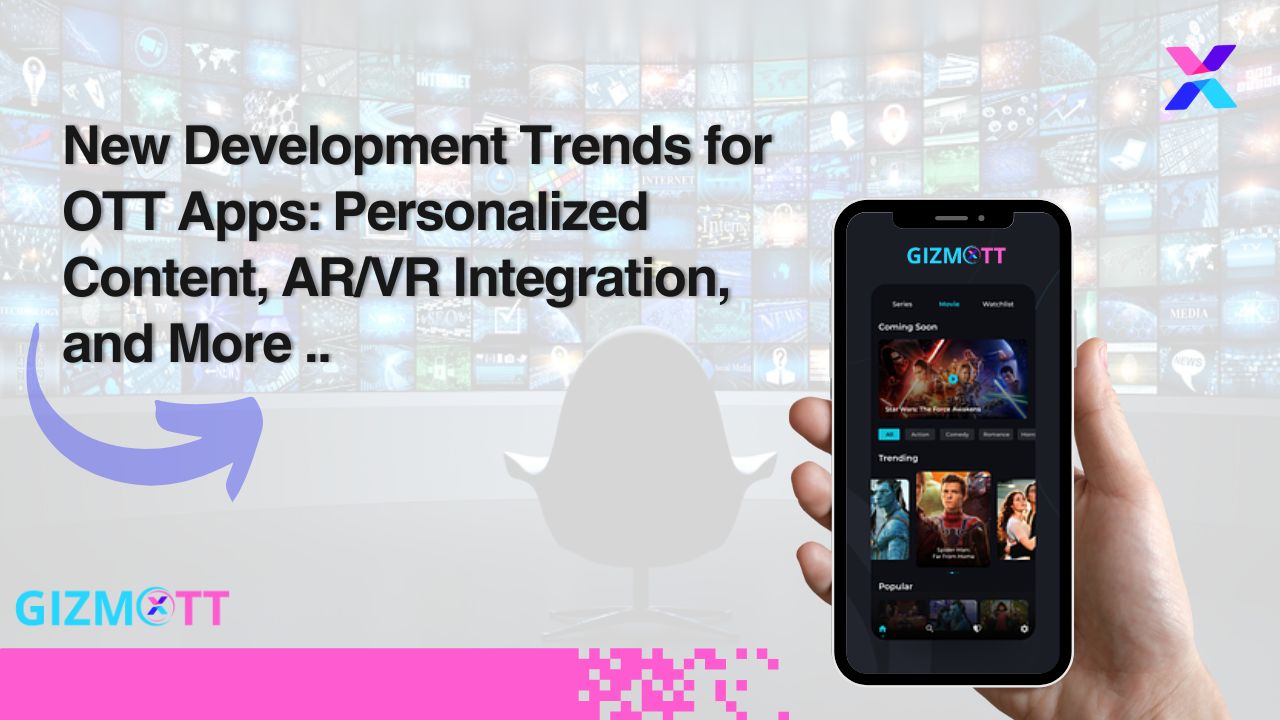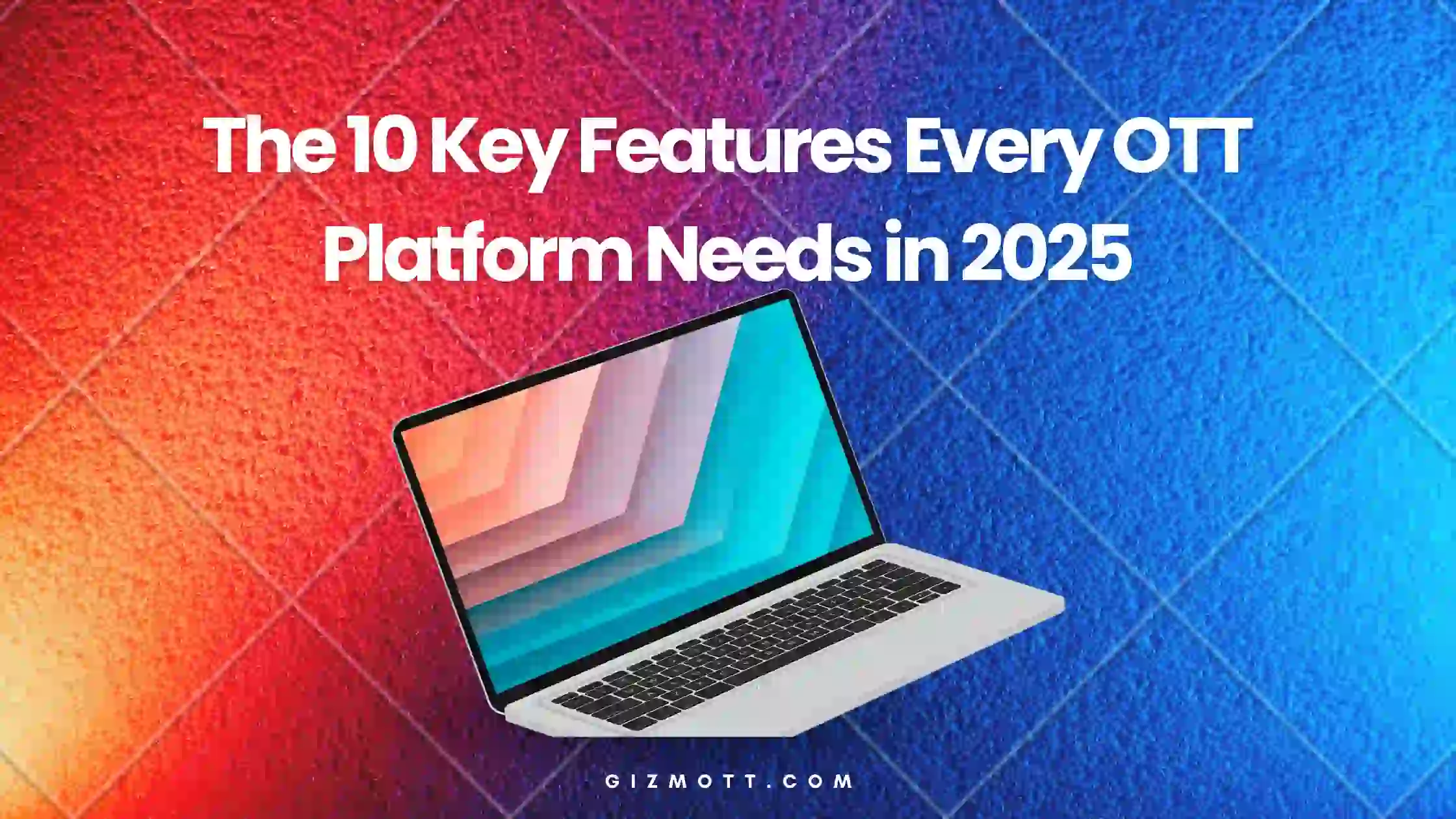In today’s digital age, Over-the-Top (OTT) applications have revolutionized the way we consume entertainment. From streaming movies and TV shows to accessing live sports events, OTT platforms have become an integral part of our daily lives. As technology continues to evolve, so do the trends shaping the development of OTT apps. In this blog, we’ll explore some of the emerging trends that are driving innovation in the OTT app development landscape.
- AR/VR Integration: Elevating the Viewing Experience
Augmented Reality (AR) and Virtual Reality (VR) technologies are no longer confined to gaming and simulation. OTT platforms are increasingly leveraging AR/VR to enhance the viewing experience for users. Imagine being able to step into your favorite movie scene or interact with characters in a virtual environment. By integrating AR/VR elements into their apps, OTT providers are creating immersive experiences that blur the lines between the digital and physical worlds.
For example, Netflix experimented with a VR app that allowed users to watch content in a virtual living room environment. Similarly, sports streaming platforms are exploring VR broadcasting, enabling fans to enjoy games as if they were sitting courtside or in the stands. As AR/VR technology becomes more accessible and sophisticated, we can expect to see even more innovative applications in the realm of OTT entertainment.
- Personalization: Tailoring Content to Individual Preferences
Personalization has become a key differentiator for OTT apps in a crowded market. Users today expect content recommendations that align with their tastes and preferences. To meet this demand, OTT platforms are leveraging advanced algorithms and machine learning techniques to analyze user behavior and deliver personalized recommendations.
By collecting data on viewing habits, genre preferences, and user interactions, OTT providers can offer curated content suggestions that keep users engaged and coming back for more. From personalized playlists to custom watchlists, the goal is to create a tailored viewing experience that feels intuitive and seamless.
Moreover, personalization extends beyond content recommendations to include features such as customized user interfaces and dynamic pricing models. By understanding the unique needs of each user, OTT apps can deliver a more engaging and satisfying experience, ultimately driving user retention and loyalty.
- Cross-Platform Accessibility: Meeting Users Where They Are
Gone are the days when consumers were tied to a single device for accessing OTT content. Today, users expect seamless access across multiple devices, whether it’s a smart TV, smartphone, tablet, or gaming console. As a result, OTT app developers are focusing on creating cross-platform experiences that allow users to pick up where they left off across different devices.
This trend is driving the adoption of responsive design principles and cloud-based solutions that enable synchronization of user data and preferences across platforms. Whether you’re binge-watching a series on your TV at home or catching up on your favorite show during your commute, the goal is to provide a consistent and uninterrupted viewing experience.
Additionally, OTT platforms are exploring partnerships and integrations with other digital services to expand their reach and provide added value to users. Whether it’s integrating with social media platforms for seamless sharing or partnering with smart home devices for enhanced connectivity, the goal is to meet users where they are and seamlessly integrate into their digital lifestyles.
In conclusion, the landscape of OTT app development is constantly evolving, driven by emerging technologies and shifting consumer expectations. From AR/VR integration to personalized recommendations and cross-platform accessibility, OTT providers are embracing innovation to deliver immersive, engaging, and personalized experiences to users. As we look to the future, we can expect these trends to continue shaping the future of OTT entertainment, offering new opportunities for both developers and consumers alike.
In the ever-evolving landscape of digital entertainment, Over-the-Top (OTT) applications stand at the forefront of innovation, reshaping how we consume media and interact with content. As technology advances and consumer preferences shift, OTT app development continues to evolve, giving rise to new trends and opportunities. Let’s delve deeper into some additional emerging trends shaping the future of OTT app development.
- Interactive Content: Engaging Users in New Ways
Interactive content represents a paradigm shift in OTT app development, offering users immersive experiences that go beyond traditional passive viewing. Interactive storytelling, gamification, and participatory experiences are gaining traction, allowing users to actively engage with content and shape the narrative in real-time.
For instance, interactive TV shows and movies enable viewers to make choices that influence the storyline, leading to multiple possible outcomes. This level of interactivity not only enhances user engagement but also fosters a sense of ownership and immersion in the content. OTT platforms are investing in interactive technologies and tools to create compelling experiences that keep users hooked and coming back for more.
- Live Streaming and Event-Based Content: Capitalizing on FOMO
In an age where live events and real-time experiences hold significant value, OTT platforms are capitalizing on the fear of missing out (FOMO) by offering live streaming and event-based content. Whether it’s streaming live sports events, concerts, or exclusive premieres, OTT apps are becoming go-to destinations for accessing real-time entertainment and experiences.
Live streaming features not only provide users with access to live events but also foster community engagement through features like live chat and audience interaction. By leveraging live streaming capabilities, OTT platforms can create a sense of urgency and exclusivity, driving user engagement and retention.
- Monetization Strategies: Diversifying Revenue Streams
As the OTT market becomes increasingly competitive, monetization strategies play a crucial role in the success of OTT apps. While subscription-based models remain popular, OTT providers are diversifying their revenue streams through alternative monetization strategies such as advertising, pay-per-view, and in-app purchases.
Advertising-supported OTT platforms offer free or ad-supported content, allowing users to access premium content in exchange for viewing ads. This model not only expands the reach of OTT apps but also provides advertisers with targeted advertising opportunities based on user data and preferences.
Furthermore, pay-per-view and transactional VOD (Video on Demand) models enable users to purchase or rent individual pieces of content, providing a flexible and on-demand viewing experience. By offering a mix of subscription-based and transactional monetization options, OTT platforms can cater to a diverse range of users and maximize revenue potential.
In conclusion, the future of OTT app development is ripe with innovation and opportunity, driven by emerging trends such as interactive content, live streaming, and diversified monetization strategies. As technology continues to evolve and consumer behaviors evolve, OTT providers must stay agile and adaptable to meet the ever-changing demands of the digital entertainment landscape. By embracing these trends and harnessing the power of technology, OTT platforms can continue to captivate audiences and shape the future of entertainment.




